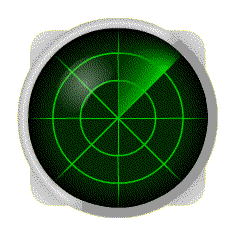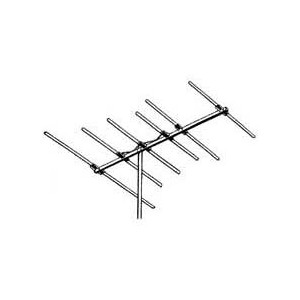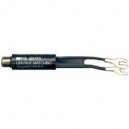INTRODUCTION: RADAR is an acronym for RAdio Detection
And Ranging. The underlying principles are well known: The term "Passive Radar" refers to an alternative method whereby signals from ordinary radio transmitters, such as those of commercial broadcast stations, are used instead of a dedicated radar transmitter. This has the obvious benefit of saving a substantial amount of money, and it also allows a great deal of flexibility, since signals from transmitters at many different locations and operating on many different frequencies can be called into play for use as the designated radar signal. Passive radar has received a lot of attention for its advantages in military applications, and many amateur radio astronomers use a variation on the theme to observe meteor activity (more about this in a bit.) In 2004, Peter Davenport of the National UFO
Reporting Center (NUFORC), published a
paper entitled: The term "multistatic" simply refers to using signals transmitted from multiple fixed locations instead of relying on just one or two transmitters. Davenport proposes a system whereby customized receiving equipment and software would be used to monitor the airwaves and analyze incoming radio signals (specifically, signal reflections from commercial FM broadcast stations) to look for certain unusual behavior patterns that might indicate UFO activity. The idea sounds promising and we recommend reading Mr. Davenport's paper in its entirety here: www.nuforc.org/MUFONPresentation.pdf One drawback to Davenport's proposal is the eight million US dollars he estimates his system will cost. Cash is tight these days and not many of us are willing to spend that kind of money on an experimental UFO detection system. Fortunately, Go Beyond Now has some more affordable suggestions for anyone interested in exploring the concept of passive radar UFO detection as a do-it-yourself project. Our system may lack the same level of high tech sophistication that Mr. Davenport has envisioned, but we see it as a very practical first step toward establishing the validity of his concept, and the initial cost to resourceful experimenters will be little or nothing.
Our goal will be to model a UFO detection system based upon the methods used for observing meteors by radio. The principle is similar, with the premise that UFOs are also capable of reflecting radio waves and therefore can make it possible to receive signals from stations that are ordinarily too distant to be heard. We should explain that FM radio signals are known to travel in a "line of sight". Unlike radio waves at lower frequencies, such as the AM and Short Wave bands, signals at FM wavelengths will not follow the curvature of the earth, so they generally won't travel more than about 90 miles before zooming straight out over the horizon and off into space. Higher and more directional antennas can increase the range, but 120-150 miles is pretty much the extreme limit for terrestrial point-to-point FM transmission. In addition to simple reflection, there may - and
probably will - be other unusual radio frequency effects that occur due to
the presence and movements of UFOs. Having a network of dedicated
listeners sharing the details of what they observe, and cross-referencing
their data with reports of visual UFO sightings, could go a long way
toward establishing a new era of scientific progress in UFO research. Here are a few general guidelines: The equipment required consists of a sensitive FM radio and a high-gain directional antenna. The radio should be one that features digital tuning so that it can be set to the exact frequency of a station which cannot normally be heard from the observer's location. Meteor listeners generally look for stations that are about 300 - 800 miles away and transmitting on a frequency not used by any nearby stations. Those of us who live in an area where the FM band is packed full with stations from one end of the dial to the other would seem to be at a disadvantage, but even though this situation might not be good for meteor listening, we still might be able to observe radio signal effects caused by UFOs. This field is wide open for research and exploration -- the rules have not been written yet, and everyone is potentially capable of making some truly groundbreaking discoveries! Car radios are often recommended for meteor listening purposes because they tend to have better sensitivity to weak signals than ordinary table-top or portable models. A bit of electronic resourcefulness will be needed to operate a 12 volt DC car radio from 120 volt AC household current, but suitable power supplies such as those used for CB radios are available, and perfectly good car radios are cheap and plentiful in the used market.
In fact, if you've got an FM radio handy, you can get started right away by simply listening for mysterious signals on any available FM frequencies. You can work on improving your system's components and your techniques over time.
Would you like to learn
more? This article is still under
construction.
Here's a good introduction
to radio meteor detection as a school project; And here's a more advanced
discussion on detecting meteors by radio: Search the FCC Database for
suitable FM stations and frequencies to monitor: You can also monitor signal
reflections from the Air Force's Space Surveillance Radar, Learn more about the Space
Surveillance Radar feed
|



